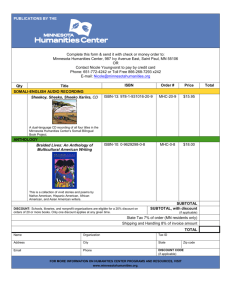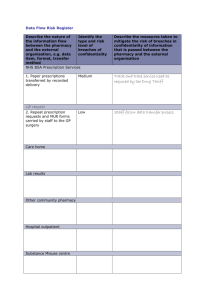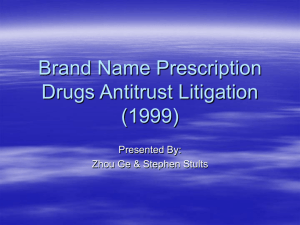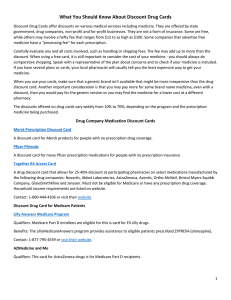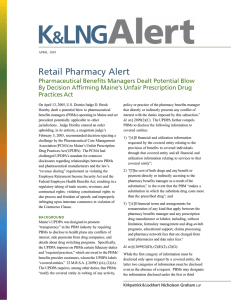Op-Ed Article - Affinity Benefits.Com
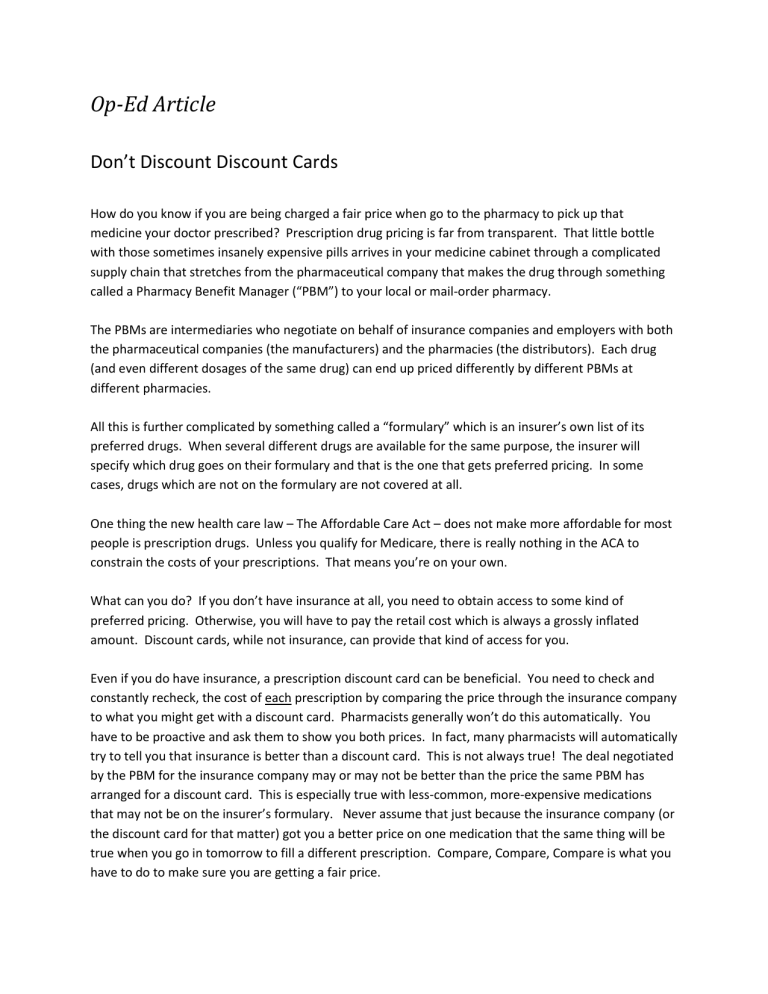
Op-Ed Article
Don’t Discount Discount Cards
How do you know if you are being charged a fair price when go to the pharmacy to pick up that medicine your doctor prescribed? Prescription drug pricing is far from transparent. That little bottle with those sometimes insanely expensive pills arrives in your medicine cabinet through a complicated supply chain that stretches from the pharmaceutical company that makes the drug through something called a Pharmacy Benefit Manager (“PBM”) to your local or mail-order pharmacy.
The PBMs are intermediaries who negotiate on behalf of insurance companies and employers with both the pharmaceutical companies (the manufacturers) and the pharmacies (the distributors). Each drug
(and even different dosages of the same drug) can end up priced differently by different PBMs at different pharmacies.
All this is further complicated by something called a “formulary” which is an insurer’s own list of its preferred drugs. When several different drugs are available for the same purpose, the insurer will specify which drug goes on their formulary and that is the one that gets preferred pricing. In some cases, drugs which are not on the formulary are not covered at all.
One thing the new health care law – The Affordable Care Act – does not make more affordable for most people is prescription drugs. Unless you qualify for Medicare, there is really nothing in the ACA to constrain the costs of your prescriptions. That means you’re on your own.
What can you do? If you don’t have insurance at all, you need to obtain access to some kind of preferred pricing. Otherwise, you will have to pay the retail cost which is always a grossly inflated amount. Discount cards, while not insurance, can provide that kind of access for you.
Even if you do have insurance, a prescription discount card can be beneficial. You need to check and constantly recheck, the cost of each prescription by comparing the price through the insurance company to what you might get with a discount card. Pharmacists generally won’t do this automatically. You have to be proactive and ask them to show you both prices. In fact, many pharmacists will automatically try to tell you that insurance is better than a discount card. This is not always true! The deal negotiated by the PBM for the insurance company may or may not be better than the price the same PBM has arranged for a discount card. This is especially true with less-common, more-expensive medications that may not be on the insurer’s formulary. Never assume that just because the insurance company (or the discount card for that matter) got you a better price on one medication that the same thing will be true when you go in tomorrow to fill a different prescription. Compare, Compare, Compare is what you have to do to make sure you are getting a fair price.
This is especially true if you are one of the over 10 million Americans now covered by a high deductible health policy that requires you to pay the full cost of your prescriptions until you meet the annual deductible. If you have this type of a policy, you definitely need to be vigilant because you can end up paying far more than you should.
Discount cards are generally made available by a charity or a customer service organization (like your newspaper for example) without a fee. So, if you are offered a discount card, take it. Put it in your wallet or purse and take it out every time you go to the pharmacy. Remember, prescription pricing is extremely variable. Your discount card can’t guarantee big savings every time on every medication but be sure to check it each time you fill or refill a prescription You’ll save money by being a better, smarter consumer. It takes a little effort but the extra money that stays in your pocket can be worth it.
Submitted by:
Steve Wyss
Affinity Group
(804) 273.9797 swyss@agu.net






